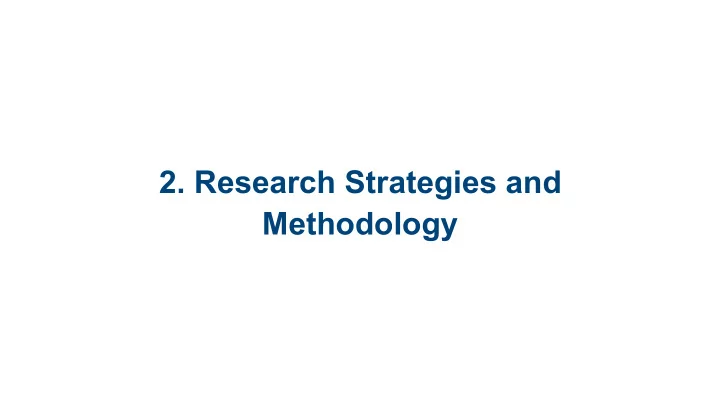

2. Research Strategies and Methodology
Research: Why? • Developmental psychologists test theories • Study behavior or trait that changes over time • When does it change? • How does it change?
2.1 Experimental 2.2 Correlational 2.3 Observational 2.4 Cross-Sectional
2.5 Longitudinal 2.6 Cross Sequential 2.7 Case Study
2.1 Experimental
Experimental design • Study cause/effect • Samples of population • Experimental/control groups if needed • Independent variable: what gets manipulated • Dependent variable: what gets measured for change
Experimental example • Cause-effect of praise on 10-year olds’ helpfulness • Independent variable: amount of praise given to each child • Dependent variable: measure of helpfulness after 3 days
2.2 Correlational
Correlation • Relationship between 2 things or events • Example: compare effects of heredity & environment on trait using mono- and dizygotic twins • Look for variation in both kinds of twins
Correlation • Result: variation in both kinds of twins ➔ Trait affected by both environment/heredity
Correlation • Statistics of correlation • +1 perfect positive correlation • 0 no correlation • -1 perfect negative correlation
2.3 Observational
Observational study • Note behaviors or traits in a group • Group might be sample of larger population • Example: studying verbal behavior of children playing unsupervised
2.4 Cross-Sectional
Cross-sectional study • “Snapshot” • Collect data on group at one point in time • Example: ask group of teens opinions on curfew
2.5 Longitudinal
Longitudinal study • Study cohort (same-age group) through time • Example: interview group born in 2010 at one-year intervals, noting changes in attitudes toward opposite sex
2.6 Cross Sequential
Cross-sequential • Combining longitudinal and cross-sectional • Example: interview cohorts born in 1990, 2000, and 2010 at intervals of 5 years • Study many years of life in shorter time than with just one cohort
2.7 Case Study
Case study • Observe one individual or group • Subject has unusual traits or in unusual circumstance • Example: study refugee child’s school adaptation • Reported as narrative with analysis, supported by theory
Recommend
More recommend